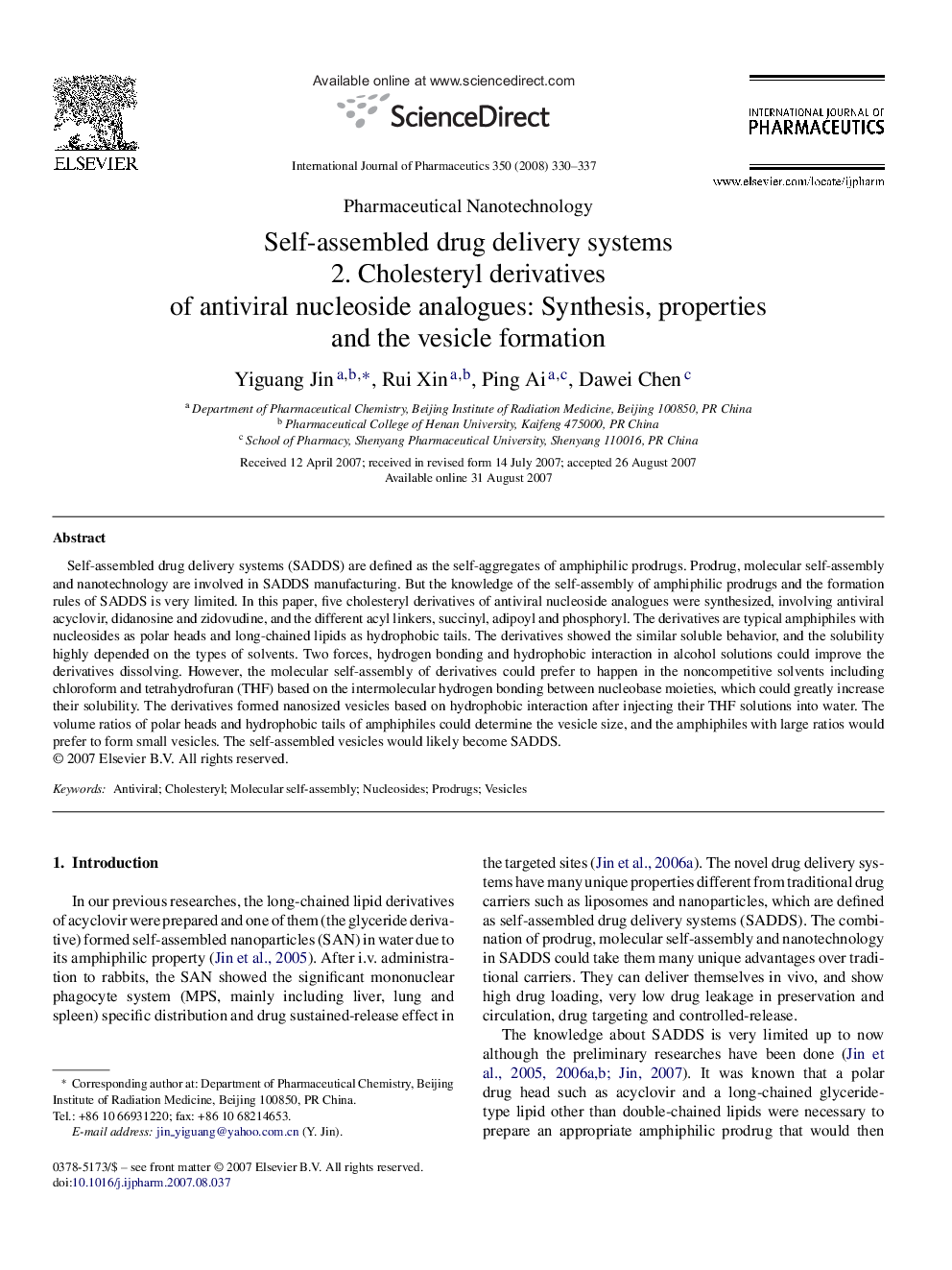| Article ID | Journal | Published Year | Pages | File Type |
|---|---|---|---|---|
| 2505729 | International Journal of Pharmaceutics | 2008 | 8 Pages |
Self-assembled drug delivery systems (SADDS) are defined as the self-aggregates of amphiphilic prodrugs. Prodrug, molecular self-assembly and nanotechnology are involved in SADDS manufacturing. But the knowledge of the self-assembly of amphiphilic prodrugs and the formation rules of SADDS is very limited. In this paper, five cholesteryl derivatives of antiviral nucleoside analogues were synthesized, involving antiviral acyclovir, didanosine and zidovudine, and the different acyl linkers, succinyl, adipoyl and phosphoryl. The derivatives are typical amphiphiles with nucleosides as polar heads and long-chained lipids as hydrophobic tails. The derivatives showed the similar soluble behavior, and the solubility highly depended on the types of solvents. Two forces, hydrogen bonding and hydrophobic interaction in alcohol solutions could improve the derivatives dissolving. However, the molecular self-assembly of derivatives could prefer to happen in the noncompetitive solvents including chloroform and tetrahydrofuran (THF) based on the intermolecular hydrogen bonding between nucleobase moieties, which could greatly increase their solubility. The derivatives formed nanosized vesicles based on hydrophobic interaction after injecting their THF solutions into water. The volume ratios of polar heads and hydrophobic tails of amphiphiles could determine the vesicle size, and the amphiphiles with large ratios would prefer to form small vesicles. The self-assembled vesicles would likely become SADDS.
